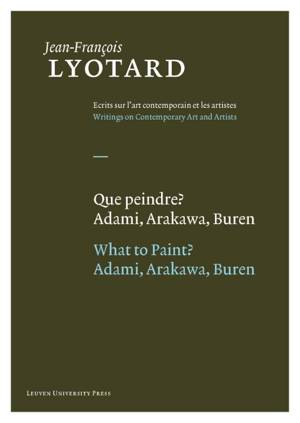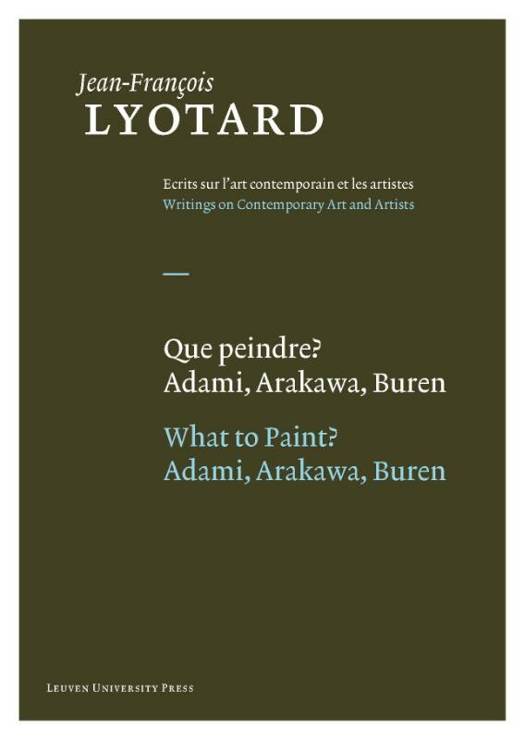
- Retrait gratuit dans votre magasin Club
- 7.000.000 titres dans notre catalogue
- Payer en toute sécurité
- Toujours un magasin près de chez vous
- Retrait gratuit dans votre magasin Club
- 7.000.0000 titres dans notre catalogue
- Payer en toute sécurité
- Toujours un magasin près de chez vous
Ecrits sur l'art contemporain et les artistes 5: Que peindre?
Adami, Arakawa, Buren
Jean-François LyotardDescription
Ce recueil est constitué de sept écrits rassemblés dans le contexte de la «philosophie de l'art»
que Jean-François Lyotard a construite dans les années quatre-vingts, à l'époque du Différend
(1983) et du «tournant kantien» aboutissant aux Leçons sur l'Analytique du sublime (1992). Les
textes focalisent sur trois artistes d'une orientation esthétique bien divergente : le dessinateur
coloriste Valerio Adami, le conceptualisateur-métaphysicien Shusaku Arakawa, le pragmaticien
de l'invisible Daniel Buren. Ces trois protagonistes ont en commun de montrer
que l'intérêt artistique n'est pas dans la simple dénotation d'un référentiel, mais dans les
connotations de nuances matérielles, les saveurs, les tons, en un mot : le visuel, à peine dévoilé
dans l'anamnèse guidant le visible et provoquant l'inquiétude essentielle de l'expérience
esthétique. Que peindre ? : ni la réalité ou un «monde» ni une riche subjectivité ni même les
fantasmes du rêve ou les idéaux de l'être-ensemble, mais l'acte de peindre lui-même, et, au-delà
de la performance du peintre, la présence des matières, qui de toute évidence, est blank, selon
un mot d'Arakawa, insaisissable.
This collection consists of seven writings assembled in the context of the "philosophy of art"
that Jean-François Lyotard developed in the nineteen-eighties, at the time of The Differend
(1983) and of the "Kantian turn" leading to the Lessons on the Analytic of the Sublime (1992).
The texts focus on three artists with widely divergent aesthetic orientations: the colourist-draughtsman
Valerio Adami, the conceptualiser-metaphysician Shusaku Arakawa, and Daniel
Buren, the pragmatist of the invisible. What these three protagonists have in common is that
they show how the artistic interest lies not in the simple denotation of a frame of reference,
but in the connotations of material nuances, flavours, tones, in a word, in the visual that is
barely revealed in the anamnesis that guides the visible and provokes the essential inquietude
of the aesthetic experience. What to Paint? Not reality or a "world", nor a rich subjectivity, nor
even the phantasms of dreams or ideals of being-together, but the act of painting itself, and,
beyond the performance of the painter, the presence of matters, a presence that in Arakawa's
words is quite obviously blank, elusive.
Spécifications
Parties prenantes
- Auteur(s) :
- Editeur:
Contenu
- Nombre de pages :
- 512
- Langue:
- Néerlandais
- Collection :
- Tome:
- n° 5
Caractéristiques
- EAN:
- 9789058677921
- Date de parution :
- 24-09-12
- Format:
- Livre relié
- Format numérique:
- Genaaid
- Dimensions :
- 160 mm x 230 mm
- Poids :
- 1085 g

Les avis
Nous publions uniquement les avis qui respectent les conditions requises. Consultez nos conditions pour les avis.






